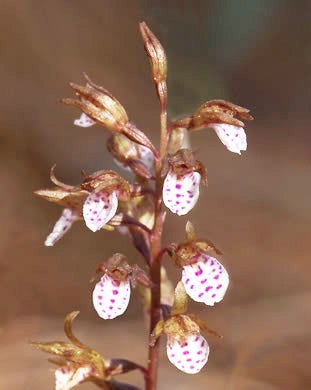Polk County’s most wanted plant: Corallorhiza wisteriana
Published 5:05 pm Wednesday, April 3, 2013
In a joint effort to expand the knowledge and understanding of the flora of Polk County, the Pacolet Area Conservancy (PAC) and botanist, David Campbell
need your help in locating this month’s “Most Wanted—Plant,” Corallorhiza wisteriana, also known by the common names: Spring Coralroot or Wister’s Coralroot.
Spring Coralroot is a rare native orchid in North Carolina. It is uncommon, but it does occur throughout the state, in the mountains, piedmont and coastal plain. It is found in moist leaf litter in woodlands, in rich ravines and on slopes, in swamps and along stream margins.
Spring Coralroot is a leafless, saprophytic (feeding, absorbing or growing upon decaying organic matter), perennial herb that does not contain chlorophyll. The plant flowers in April and May. Flowers occur on a loose raceme (a flower cluster consisting of a single central stem (rachis), along which individual flowers grow on small stalks at intervals, blooming from the base toward the tip) that is 4-18 inches tall with erect, slender flowering stems. The stem is tan below to yellow-brown or reddish purple above and sheathed around the lower portions. Flowers contain three sepals and three petals. The two lateral petals that are reddish brown to greenish yellow, often suffused with purple, converging to form a hood over the lip, or lower, third petal. The lower petal (lip) is white with magenta spots. Flowers are 0.25-0.33 inches long. After flowering, the fruits are ovoid capsules, 0.4 inches long and 0.2 inches wide.
Due to the above described features – no leaves, slender, low growing, flesh-colored stem, and tiny flowers – this can be a hard plant to find, but if you find it in flower, you’re in for a real treat. The small flowers of this rare orchid are beautiful.






